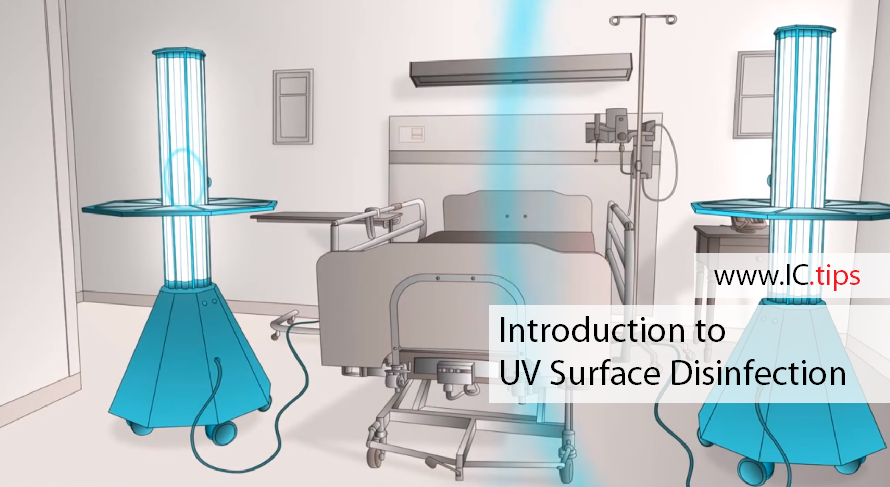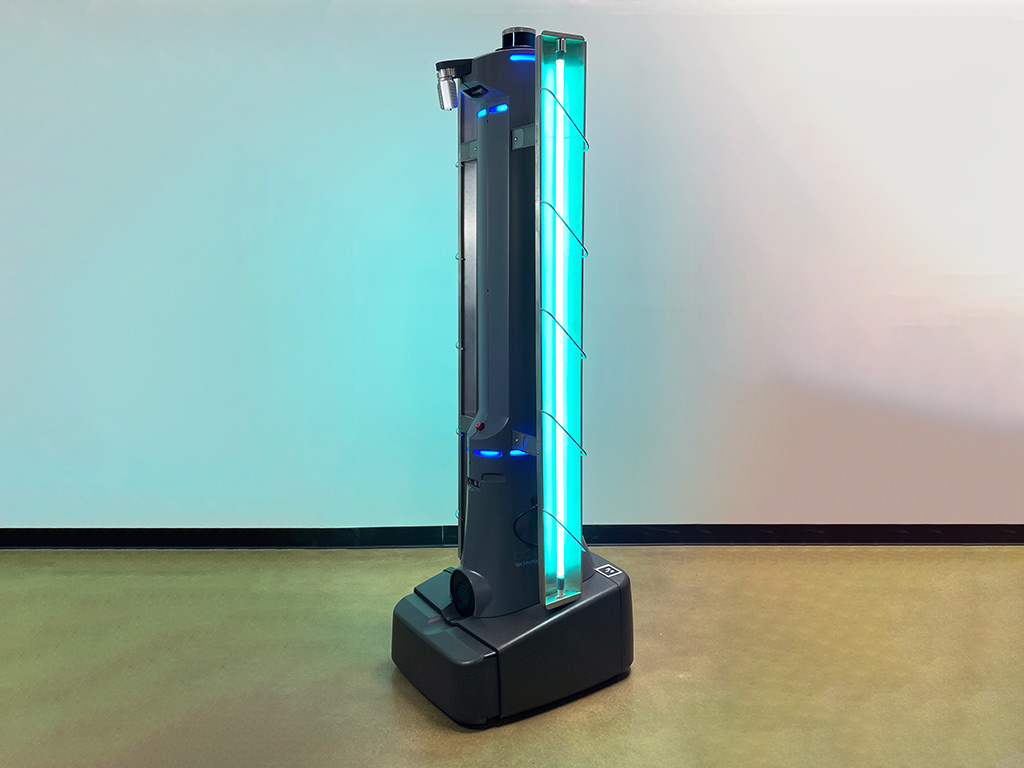Revealing the Benefits of UV Sanitation: Making Certain Tidy and Sanitized Spaces
In the age of enhanced understanding surrounding health and cleanliness, the value of effective sanitation approaches can not be overstated. While standard cleansing techniques have long been counted upon, improvements in innovation have presented a cutting-edge service that makes certain tidy and disinfected spaces: UV sanitation. By taking advantage of the power of ultraviolet light, this method has gained acknowledgment for its capability to remove hazardous virus and offer a comprehensive sanitization process. The benefits of UV disinfection extend much beyond its effectiveness. This conversation will certainly discover the scientific research behind UV sanitation, its effectiveness on numerous pathogens, its applications in different setups, and the benefits it holds over standard techniques. Additionally, we will certainly explore the safety and security considerations that must be taken into consideration when carrying out UV disinfection. Prepare to discover a new measurement of cleanliness and uncover the untapped possibility of UV sanitation.

The Science Behind UV Sanitation
UV sanitation is a scientifically tried and tested approach that uses ultraviolet light to eliminate hazardous microorganisms from surface areas and water. The scientific research behind UV disinfection depends on the ability of UV-C light to harm the DNA and RNA of microbes, providing them unable to recreate and causing their eventual fatality. UV-C light drops within the wavelength series of 200 to 280 nanometers, which is extremely effective in destroying bacteria, infections, and other virus.
When exposed to UV-C light, the genetic product of microbes takes in the energy from the light, bring about the formation of thymine dimers. These dimers interfere with the regular duplication and transcription processes of the microbes, inhibiting their ability to duplicate and endure (uv surface disinfection). The DNA and RNA damages brought on by UV-C light is dangerous to the bacteria, making UV sanitation a effective and dependable approach for eliminating a variety of microorganisms
UV disinfection is especially valuable in settings where standard chemical disinfectants may be impractical or ineffective. It is a non-chemical method that does not leave any type of residues or hazardous spin-offs, making it safe for use in food processing, medical care facilities, water therapy plants, and numerous other industries. UV disinfection is environmentally pleasant, as it does not add to the advancement of antibiotic-resistant microorganisms or other harmful toxins.
Efficiency of UV Disinfection on Pathogens
The performance of UV disinfection in removing pathogens has been thoroughly examined and proven in many clinical researches. UV radiation has the capacity to inactivate a large range of bacteria, including fungis, viruses, and bacteria, by damaging their DNA or RNA. This avoids them from duplicating and creating infections.
One study released in the American Journal of Infection Control discovered that UV sanitation was reliable in minimizing the existence of multiple drug-resistant bacteria in medical facility areas. Another research study carried out by the National Institute for Occupational Safety and Wellness showed that UV disinfection had the ability to eliminate 99.9% of the flu virus on surfaces.
UV disinfection has likewise shown promise in combating the spread of healthcare-associated infections (HAIs) According to a research study released in The Lancet, making use of UV-C light in enhancement to standard cleansing protocols significantly decreased the incidence of HAIs in a healthcare facility setup.
Furthermore, UV disinfection has proven to be efficient versus arising virus, such as the serious intense respiratory syndrome coronavirus 2 (SARS-CoV-2), which causes COVID-19. A research study conducted by the National Arising Transmittable Illness Laboratories demonstrated that UV-C light can suspend the infection on surfaces within seconds.
Applications of UV Sanitation in Various Setups
With its proven efficiency in removing virus, UV sanitation has found applications in a range of setups. Among the most common locations where UV sanitation is utilized remains in health care facilities. UV technology is made use of to decontaminate individual spaces, operating areas, and other high-touch surface areas, lowering the danger of healthcare-associated infections. In addition, UV disinfection is also being implemented in food processing plants and restaurants to ensure the safety of food items and stop the spread of foodborne health problems. UV sanitation is additionally helpful in water therapy plants, where it is made use of to eliminate unsafe microorganisms and give risk-free drinking water.
One more crucial application of UV sanitation impends filtration market. UV air cleansers are utilized in property, commercial, and industrial settings to get rid of air-borne bacteria, viruses, and mold and mildew spores. This innovation is specifically useful in settings where people are extra prone to breathing infections, such as healthcare facilities, colleges, and office complex.
Additionally, UV disinfection is significantly being used in public transport systems, such as trains and buses, to keep clean and sterilized rooms for guests. UV light is used to decontaminate surfaces and air inside the lorries, reducing the risk of spreading infectious illness.
Benefits of UV Sanitation Over Standard Techniques
In contrast to traditional approaches, UV sanitation offers a variety of unique benefits that make it a more effective choice in different markets and settings. One substantial advantage is its performance versus a wide variety of microbes, including microorganisms, fungi, and infections. Unlike chemical disinfectants that may why not try here have restricted efficiency against certain virus, UV disinfection is a non-selective process that can eliminate or inactivate a wide range of damaging organisms.
One more benefit of UV sanitation is its capability to give fast and reliable sanitation. Standard sanitation approaches frequently need longer contact times or numerous actions to achieve the desired level of disinfection. In comparison, UV light can offer constant and prompt disinfection, lowering downtime and boosting efficiency in various applications.
UV disinfection likewise provides a environmentally friendly and risk-free choice to standard disinfection techniques. uv surface disinfection. Unlike chemical representatives, UV light does not leave behind any kind of unsafe deposits or byproducts, making it appropriate for use in sensitive environments such as food processing facilities, health care setups, click to read more and water therapy plants
Furthermore, UV sanitation is a cost-effective option in the future. While the ahead of time investment for UV sanitation systems might be more than traditional approaches, the operational expenses are commonly reduced. UV lamps have a lengthy life-span and require very little upkeep, leading to lowered labor and substitute costs.
Safety And Security Considerations for UV Sanitation
Thinking about the prospective dangers related to UV disinfection, it is important to deal with the safety considerations included in implementing this modern technology. UV sanitation makes use of ultraviolet light to kill or inactivate bacteria, making it an effective approach for sterilizing different surface areas and objects. Nevertheless, it is very important to recognize that UV radiation can additionally present risks to human health and wellness if proper precaution are not followed.
Most importantly, direct exposure to UV radiation can cause injury to the skin and eyes. Long term exposure can bring about sunburn, skin damage, and also a boosted risk of developing skin cancer cells. It is essential to ensure that UV sanitation systems are properly confined and equipped with safety and security features such as automatic shut-off devices or Get More Info activity sensors to prevent accidental direct exposure.

Additionally, correct training and education are important for those accountable for running UV sanitation systems. They should understand the potential hazards, recognize the safety and security protocols, and understand how to take care of and maintain the tools correctly.
Final Thought
UV sanitation can be used in different setups, consisting of healthcare facilities, food processing plants, and water treatment systems. Compared to typical techniques, UV sanitation has benefits such as faster disinfection times, minimal chemical use, and no unsafe byproducts.
UV sanitation is a scientifically tested method that makes use of ultraviolet light to remove hazardous microorganisms from surface areas and water. The DNA and RNA damages caused by UV-C light is deadly to the microbes, making UV disinfection a reliable and dependable method for killing a broad array of virus.
An additional advantage of UV sanitation is its ability to supply rapid and reliable sanitation. UV disinfection uses ultraviolet light to kill or suspend bacteria, making it an efficient approach for sterilizing different surface areas and things. Contrasted to standard techniques, UV sanitation has benefits such as faster sanitation times, minimal chemical usage, and no dangerous results.